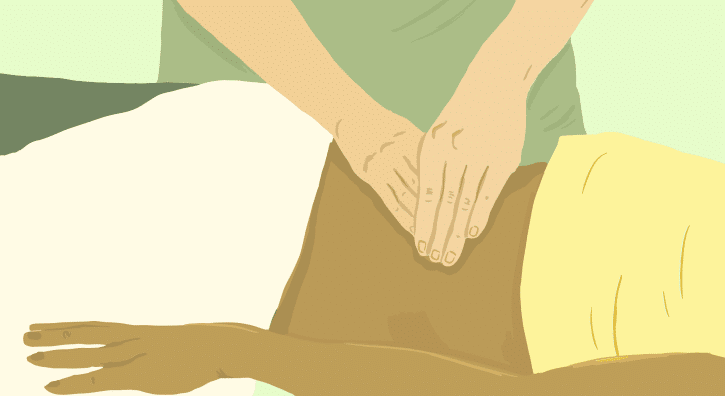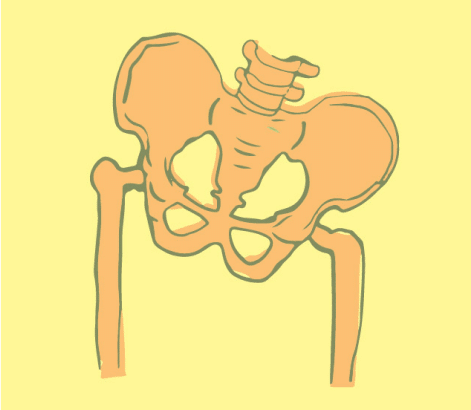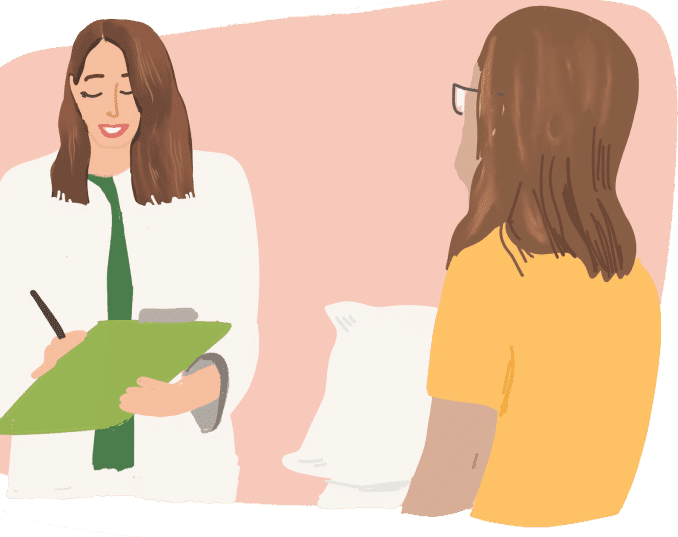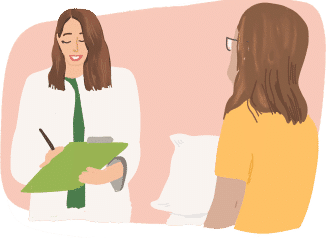

Sexual dysfunction can affect people in deeply personal ways—whether it’s ongoing problems with arousal, reduced sexual desire, difficulty achieving orgasm, or pain during intimate activity. Often, the role of the pelvic floor muscles in these issues goes unrecognized. These muscles play a fundamental part in sexual health by supporting erections in men and intensifying orgasmic sensations in all individuals through rhythmic contractions. Ideally, they enhance the sexual experience, but when they become tense, weak, or uncoordinated, they may instead lead to discomfort, altered sensation, or a general loss of pleasure. These changes can take a toll on emotional well-being and intimacy. Fortunately, pelvic floor physical and occupational therapy offers a practical, evidence-based approach to resolving these concerns, improving both function and the overall experience of intimacy.
The Facts
- Around one in three women who have not yet reached menopause will deal with sexual pain at some point, making it one of the most common yet under-discussed health concerns.
- Between 15% and 72% of men younger than 40 have reported experiencing erectile dysfunction, underscoring that this issue isn’t limited to older adults.
- In men aged 40 to 70, approximately 52% will encounter mild to moderate issues with erectile function, affecting both confidence and quality of life.
- Following prostate surgery, up to 80% of men say they notice significant changes in their ability to achieve or maintain an erection.
- For about 60% of women going through menopause, embarrassment becomes a major barrier to discussing painful sex with a doctor, leaving the issue unaddressed.
- Vulvar discomfort and decreased lubrication are common side effects of medications such as hormonal birth control and certain acne treatments.
- Painful intercourse continues to affect roughly 65% of women for up to 18 months postpartum, highlighting the long-term impact of childbirth on sexual health.
Sexual dysfunction can affect people in deeply personal ways—whether it’s ongoing problems with arousal, reduced sexual desire, difficulty achieving orgasm, or pain during intimate activity. Often, the role of the pelvic floor muscles in these issues goes unrecognized. These muscles play a fundamental part in sexual health by supporting erections in men and intensifying orgasmic sensations in all individuals through rhythmic contractions. Ideally, they enhance the sexual experience, but when they become tense, weak, or uncoordinated, they may instead lead to discomfort, altered sensation, or a general loss of pleasure. These changes can take a toll on emotional well-being and intimacy. Fortunately, pelvic floor physical and occupational therapy offers a practical, evidence-based approach to resolving these concerns, improving both function and the overall experience of intimacy.
The Facts
- Around one in three women who have not yet reached menopause will deal with sexual pain at some point, making it one of the most common yet under-discussed health concerns.
- Between 15% and 72% of men younger than 40 have reported experiencing erectile dysfunction, underscoring that this issue isn’t limited to older adults.
- In men aged 40 to 70, approximately 52% will encounter mild to moderate issues with erectile function, affecting both confidence and quality of life.
- Following prostate surgery, up to 80% of men say they notice significant changes in their ability to achieve or maintain an erection.
- For about 60% of women going through menopause, embarrassment becomes a major barrier to discussing painful sex with a doctor, leaving the issue unaddressed.
- Vulvar discomfort and decreased lubrication are common side effects of medications such as hormonal birth control and certain acne treatments.
- Painful intercourse continues to affect roughly 65% of women for up to 18 months postpartum, highlighting the long-term impact of childbirth on sexual health.
Symptoms
*Sexual Dysfunction in people with a penis
- Erectile dysfunction symptoms might involve a weak erection, difficulty maintaining firmness, or an orgasm that occurs prematurely.
- Some individuals also observe a diminished or missing ejaculatory force that feels unusual or concerning.
- The unintentional release of urine during orgasm, known as climacturia, can be an often-overlooked but important signal.
- Pain after ejaculation may be localized to the penis, scrotum, or perineum, and can range from mild to intense.
- Discoloration of the genital or surrounding skin, especially around the penis and scrotum, may appear alongside these symptoms.
Postpartum Sexual Dysfunction
- Nursing-induced hormonal shifts may impair vaginal moisture levels, causing uncomfortable dryness
- Pain in the perineum area as a result of healing from episiotomy or natural tearing during labor
- Difficulty achieving or maintaining orgasm, or complete absence of climax after delivery
- Uncontrolled urination during sexual activity or at the point of orgasm
- Persistent and often discouraging pain during sexual encounters
*Sexual Dysfunction in people with vulvas/vaginas
- Reduced or absent vaginal moisture during arousal, leading to a dry or irritated sensation
- Penetration-related pain—whether at the initial entry, during deeper movement, or all throughout sex
- Clitoral touch triggering discomfort or pain, suggesting abnormal nerve sensitivity
- Post-intercourse burning or soreness that feels internal or external and often disrupts recovery
- Feeling unable to climax or finding that orgasm no longer feels as strong or pleasurable
- Involuntary urination that happens during sex, commonly linked to weakened pelvic floor muscles
- Urine leakage occurring right at orgasm—this is known as climacturia and may require therapeutic evaluation
Menopausal Sexual Dysfunction and Post-gynecologic cancer treatment
- Declining hormone levels causing dryness and limiting natural vaginal lubrication
- Sensitivity or pain that makes penetration challenging or intolerable
- Painful sensations during or after sex, sometimes lasting for hours
- Orgasmic dysfunction ranging from reduced intensity to complete loss of climax response
Symptoms
*Sexual Dysfunction in people with a penis
- Erectile dysfunction symptoms might involve a weak erection, difficulty maintaining firmness, or an orgasm that occurs prematurely.
- Some individuals also observe a diminished or missing ejaculatory force that feels unusual or concerning.
- The unintentional release of urine during orgasm, known as climacturia, can be an often-overlooked but important signal.
- Pain after ejaculation may be localized to the penis, scrotum, or perineum, and can range from mild to intense.
- Discoloration of the genital or surrounding skin, especially around the penis and scrotum, may appear alongside these symptoms.
*Sexual Dysfunction in people with vulvas/vaginas
- Reduced or absent vaginal moisture during arousal, leading to a dry or irritated sensation
- Penetration-related pain—whether at the initial entry, during deeper movement, or all throughout sex
- Clitoral touch triggering discomfort or pain, suggesting abnormal nerve sensitivity
- Post-intercourse burning or soreness that feels internal or external and often disrupts recovery
- Feeling unable to climax or finding that orgasm no longer feels as strong or pleasurable
- Involuntary urination that happens during sex, commonly linked to weakened pelvic floor muscles
- Urine leakage occurring right at orgasm—this is known as climacturia and may require therapeutic evaluation
Postpartum Sexual Dysfunction
- Nursing-induced hormonal shifts may impair vaginal moisture levels, causing uncomfortable dryness
- Pain in the perineum area as a result of healing from episiotomy or natural tearing during labor
- Difficulty achieving or maintaining orgasm, or complete absence of climax after delivery
- Uncontrolled urination during sexual activity or at the point of orgasm
- Persistent and often discouraging pain during sexual encounters
Menopausal Sexual Dysfunction and Post-gynecologic cancer treatment
- Declining hormone levels causing dryness and limiting natural vaginal lubrication
- Sensitivity or pain that makes penetration challenging or intolerable
- Painful sensations during or after sex, sometimes lasting for hours
- Orgasmic dysfunction ranging from reduced intensity to complete loss of climax response
Associated Diagnoses
Diagnoses such as Endometriosis, Vulvodynia, Interstitial Cystitis/Painful Bladder Syndrome, Pudendal Neuralgia, Chronic Pelvic Pain Syndrome/Male Pelvic Pain, Lichen Sclerosus, Lichen Planus, Pelvic Floor Dysfunction, post-prostatectomy complications, and Genitourinary Syndrome of Menopause are all associated with sexual dysfunction and pelvic pain.

Associated Diagnoses
Diagnoses such as Endometriosis, Vulvodynia, Interstitial Cystitis/Painful Bladder Syndrome, Pudendal Neuralgia, Chronic Pelvic Pain Syndrome/Male Pelvic Pain, Lichen Sclerosus, Lichen Planus, Pelvic Floor Dysfunction, post-prostatectomy complications, and Genitourinary Syndrome of Menopause are all associated with sexual dysfunction and pelvic pain.


Causes of Sexual Dysfunction
- Pelvic pain syndromes associated with pelvic floor dysfunction (above)
- Childbirth
- Medications
- Obesity
- Cardiovascular disease
- Menopause
- Jelqing
- Genital mutilation, genital cutting
- Surgically-induced
- Pelvic Floor Reconstruction
- Prostatectomy
- Gender affirming surgery
- Episiotomy
- Vestibulectomy
- Pudendal Nerve Decompression
- Mesh excision
Causes of Sexual Dysfunction
- Pelvic pain syndromes associated with pelvic floor dysfunction (above)
- Childbirth
- Medications
- Obesity
- Cardiovascular disease
- Menopause
- Jelqing
- Genital mutilation, genital cutting
- Surgically-induced
- Pelvic Floor Reconstruction
- Prostatectomy
- Gender affirming surgery
- Episiotomy
- Vestibulectomy
- Pudendal Nerve Decompression
- Mesh excision

Diagnostic Challenges
Open conversations about sexual health are still rare in most clinical settings, despite their importance to overall well-being. Medical professionals often lack the training or confidence to engage in these discussions, and patients, fearing embarrassment or judgment, may hesitate to voice their concerns. This creates a significant care gap—especially for LGBTQ+ individuals, who already face systemic inequities and are more likely to feel dismissed or unsafe in traditional healthcare environments. At PHRC, we see the critical need for change. We offer an environment where every patient, regardless of identity or concern, is treated with respect and compassion. Sexual health is now widely recognized as a specialized field, and our team embraces a collaborative care model that includes physical and occupational therapy, emotional support, and medical evaluation. By addressing both the physical and psychological components of sexual function, we help patients move toward a fuller, more empowered expression of their health and identity.
Diagnostic Challenges
Open conversations about sexual health are still rare in most clinical settings, despite their importance to overall well-being. Medical professionals often lack the training or confidence to engage in these discussions, and patients, fearing embarrassment or judgment, may hesitate to voice their concerns. This creates a significant care gap—especially for LGBTQ+ individuals, who already face systemic inequities and are more likely to feel dismissed or unsafe in traditional healthcare environments. At PHRC, we see the critical need for change. We offer an environment where every patient, regardless of identity or concern, is treated with respect and compassion. Sexual health is now widely recognized as a specialized field, and our team embraces a collaborative care model that includes physical and occupational therapy, emotional support, and medical evaluation. By addressing both the physical and psychological components of sexual function, we help patients move toward a fuller, more empowered expression of their health and identity.
Treatment:
How We Can Help You

Sexual dysfunction can be a complex and emotionally taxing experience, but for many individuals in Calabasas, pelvic floor physical and occupational therapy offers a promising path forward. We encourage you to begin with a one-on-one evaluation to assess whether your pelvic muscles are contributing to your symptoms. Your initial session includes a comprehensive review of your health history, any prior treatments or diagnoses, and a discussion of your current concerns. We’ve worked with many people in the Calabasas area who’ve felt ignored or misunderstood by previous providers, and we make it our mission to offer the compassionate, knowledgeable care they’ve been seeking. Your physical exam will assess muscular tone, tissue sensitivity, nerve involvement, joint alignment, and overall movement patterns. From there, your therapist will explain the findings and build a treatment roadmap that includes weekly visits (usually once or twice a week) for up to 12 weeks, along with a home program to reinforce your results. Your therapist may also consult with other healthcare professionals on your team to ensure cohesive care. We’re committed to helping you reclaim your health, comfort, and confidence—both in Calabasas and beyond.

Treatment:
How We Can Help You
Sexual dysfunction can be a complex and emotionally taxing experience, but for many individuals in Calabasas, pelvic floor physical and occupational therapy offers a promising path forward. We encourage you to begin with a one-on-one evaluation to assess whether your pelvic muscles are contributing to your symptoms. Your initial session includes a comprehensive review of your health history, any prior treatments or diagnoses, and a discussion of your current concerns. We’ve worked with many people in the Calabasas area who’ve felt ignored or misunderstood by previous providers, and we make it our mission to offer the compassionate, knowledgeable care they’ve been seeking. Your physical exam will assess muscular tone, tissue sensitivity, nerve involvement, joint alignment, and overall movement patterns. From there, your therapist will explain the findings and build a treatment roadmap that includes weekly visits (usually once or twice a week) for up to 12 weeks, along with a home program to reinforce your results. Your therapist may also consult with other healthcare professionals on your team to ensure cohesive care. We’re committed to helping you reclaim your health, comfort, and confidence—both in Calabasas and beyond.
How Can We Help You?
Please use the form below to send us any questions or comments. You must include your e-mail address in order for us to send a response. Please be assured that all of your information will be kept confidential.

Join The Newsletter. Win a copy of our book, “Pelvic Pain Explained!”
We love getting to know our website visitors. Please tell us a little bit about yourself and get the latest info via PHRC e-newsletter!
*Subscribers automatically eligible to win our book, “Pelvic Pain Explained.”
Pelvic Pain Explained is a thoughtful, in-depth examination of what it truly means to live with a chronic, often invisible condition. It captures the voices and struggles of those dealing with pelvic pain, detailing the long journey through misdiagnoses, ineffective treatments, and the emotional labor of advocating for oneself in an often dismissive medical landscape. The book highlights the dual burden faced by patients and clinicians alike—patients grappling with persistent pain and lack of answers, and clinicians trying to untangle a complex condition without a clear playbook. The narrative also dives into the psychological effects of this struggle, particularly how pelvic pain can disrupt personal relationships and a person’s sense of control. It’s an honest, empathetic look at a condition that deserves far more attention than it typically receives.


